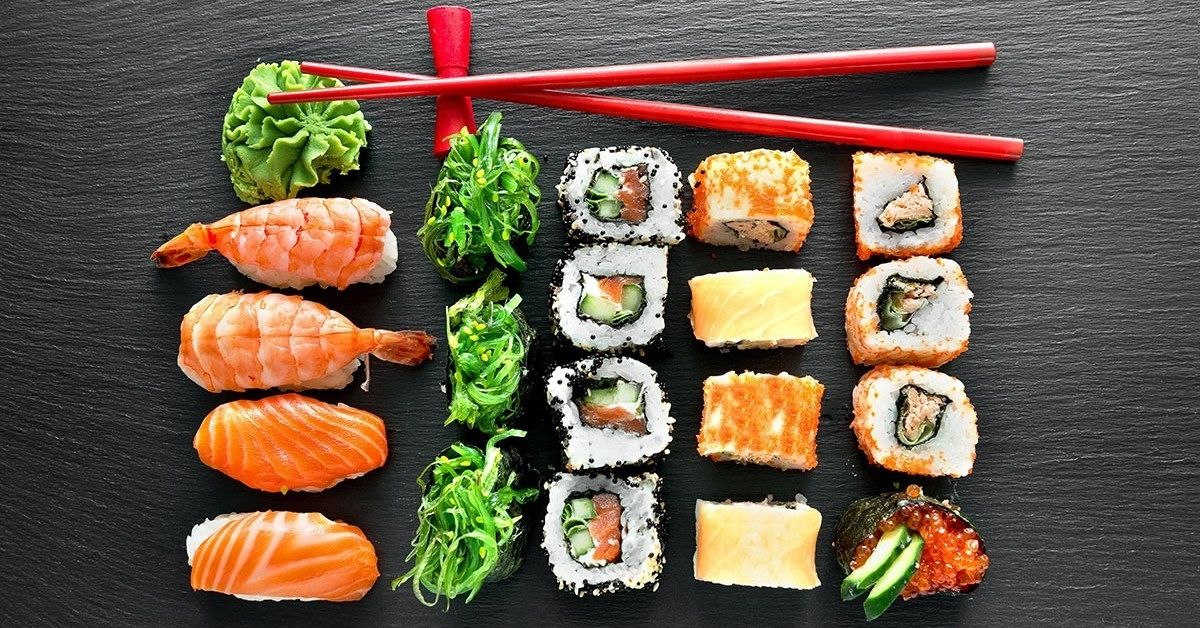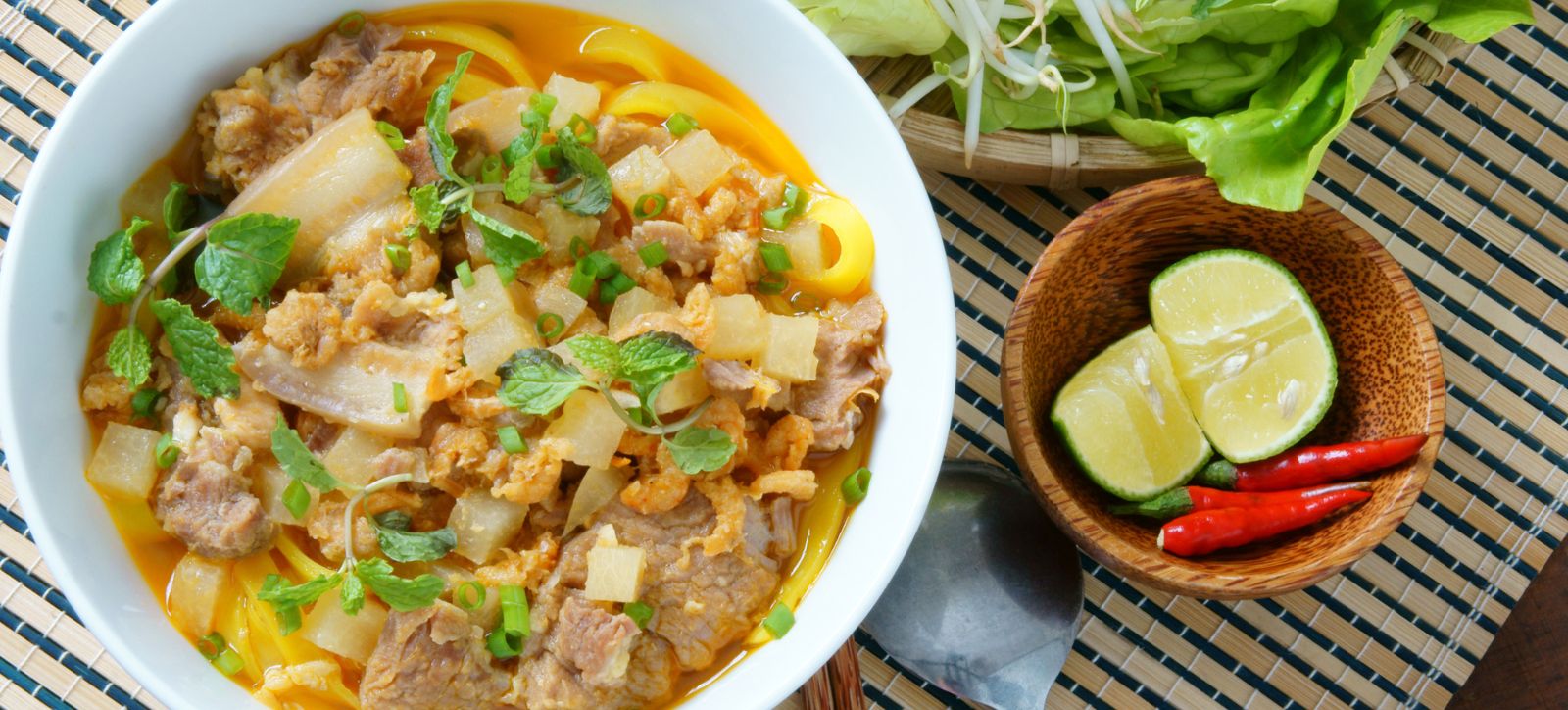No products in the cart.
Blog
Khám Phá ẩm Thực Nhật Bản: Từ A đến Z
[

Khám Phá Ẩm Thực Nhật Bản: Từ A đến Z

Introduction

Japan, a land of ancient traditions and modern marvels, boasts a culinary scene as rich and diverse as its culture. From the delicate artistry of sushi to the hearty warmth of ramen, Japanese cuisine offers a sensory experience unlike any other. This comprehensive guide will take you on a journey through the heart of Japanese gastronomy, exploring its key elements, iconic dishes, and essential cultural nuances. Prepare to tantalize your taste buds and deepen your appreciation for this truly remarkable culinary heritage. Get ready to embark on a delicious adventure!
Sushi: The Art of Perfection
Sushi, arguably the most internationally recognized Japanese dish, is far more than just raw fish on rice. It’s a testament to precision, skill, and an unwavering dedication to freshness. The preparation is a meticulous art form, demanding years of training and a deep understanding of ingredients.
- Rice: The foundation of sushi, the rice is specially prepared with rice vinegar, sugar, and salt, achieving a perfect balance of sweetness and tanginess.
- Fish: The quality of the fish is paramount. Only the freshest, sustainably sourced fish is used, often identified by its glistening appearance and firm texture.
- Wasabi: This pungent green paste, made from the wasabi plant, adds a sharp, invigorating kick that cleanses the palate between bites.
- Soy Sauce: A fundamental condiment, soy sauce adds a savory depth that complements the subtle flavors of the fish and rice.
- Gari (Pickled Ginger): Served between pieces of sushi, gari cleanses the palate and prepares your taste buds for the next flavor profile.
- Preparation Techniques: From nigiri (fish atop rice) to maki (rolled sushi), the preparation techniques are complex and refined, requiring years of practice to master.
Ramen: A Hearty Soul Warmer
Ramen, a deceptively simple dish, is a cornerstone of Japanese comfort food. The seemingly straightforward combination of noodles, broth, and toppings hides a world of flavor and complexity. Each bowl tells a story, reflecting regional variations and the chef’s unique approach.
- Broth: The soul of ramen, the broth can be based on pork, chicken, seafood, or vegetables, each with its own distinct character. Hours of simmering are often required to achieve the desired depth of flavor.
- Noodles: The type of noodle used varies regionally, influencing the overall texture and mouthfeel of the dish. Some are thin and delicate, while others are thick and chewy.
- Toppings: The possibilities are endless! From chashu pork belly to soft-boiled eggs, bamboo shoots, and scallions, the toppings add layers of texture and flavor.
- Regional Variations: Ramen styles vary considerably across Japan, reflecting local ingredients and culinary traditions. Sapporo miso ramen and Hakata tonkotsu ramen are prime examples of these regional differences.
- Customization: Most ramen shops allow for customization, offering choices of broth richness, noodle firmness, and topping combinations.
- Atmosphere: Ramen shops are often bustling and energetic, providing a lively and authentic dining experience.
Tempura: The Art of Light and Crisp
Tempura, a delicate dance of lightly battered and deep-fried seafood and vegetables, is a testament to Japanese culinary precision. The key lies in the batter’s lightness and the oil’s temperature, producing a magically crisp exterior that contrasts beautifully with the tender interior.
- Batter: A delicate, airy batter is essential. The precise ratio of flour, water, and ice creates a batter that results in a wonderfully crisp, light, and non-greasy tempura.
- Oil Temperature: Maintaining the perfect oil temperature is crucial. Too hot, and the batter burns; too cold, and it becomes soggy.
- Seafood and Vegetables: A wide variety of seafood and vegetables are used, often seasonally selected for optimal flavor and freshness.
- Technique: The technique of dredging and deep-frying requires skill and practice to ensure the tempura is evenly cooked and golden brown.
- Serving: Tempura is often served with a light dipping sauce and grated daikon radish, adding a refreshing counterpoint to the richness of the fried ingredients.
- Presentation: The artful presentation of the tempura adds to the overall dining experience.
Kaiseki: A Culinary Symphony
Kaiseki is not merely a meal; it’s a sophisticated culinary and artistic experience that unfolds over several courses. Each dish is meticulously prepared, showcasing seasonal ingredients and exceptional artistry. It’s a reflection of Japanese aesthetics and philosophy, celebrating harmony and balance.
- Seasonality: Kaiseki emphasizes the use of seasonal ingredients, ensuring each dish reflects the flavors and textures of the current season.
- Presentation: The presentation of each dish is as important as its taste, with an emphasis on artistic arrangement and visual appeal.
- Variety: A typical Kaiseki meal includes a variety of small dishes, offering a diverse range of flavors and textures.
- Harmony: The balance and harmony between flavors and textures are key to the Kaiseki experience.
- Cultural Significance: Kaiseki is more than just a meal; it’s a reflection of Japanese culture, aesthetics, and philosophy.
- Complexity: The preparation of a Kaiseki meal requires significant skill and expertise, making it a truly remarkable culinary achievement.
Wagashi: The Sweet Art of Japan
Wagashi, traditional Japanese sweets, are more than just desserts; they are miniature works of art, reflecting the seasons and natural beauty of Japan. Their delicate flavors and elegant presentations offer a refined end to a meal or a delightful treat on their own.
- Mochi: Chewy rice cakes, often flavored with sweet fillings.
- Daifuku: Mochi filled with sweet bean paste.
- Dorayaki: Small pancakes filled with sweet bean paste.
- Yokan: A firm, jelly-like sweet made from red bean paste, agar-agar, and sugar.
- Seasonal Ingredients: Many Wagashi incorporate seasonal fruits, flowers, and leaves, reflecting the natural beauty of each season.
- Presentation: The presentation of Wagashi is often as important as its taste, with an emphasis on elegant design and artistic detail.
Table: Comparing Key Aspects of Japanese Cuisine
| Dish | Key Ingredients | Cooking Method | Flavor Profile | Cultural Significance |
|---|---|---|---|---|
| Sushi | Rice, fish, vegetables, wasabi | Raw, vinegared rice | Fresh, delicate, umami | Represents Japanese precision and respect for ingredients |
| Ramen | Noodles, broth, toppings | Boiling, simmering | Savory, hearty, comforting | Symbol of Japanese comfort food and regional variations |
| Tempura | Seafood, vegetables, batter | Deep-frying | Light, crisp, savory | Demonstrates Japanese mastery of frying techniques |
| Kaiseki | Seasonal ingredients | Varies widely | Balanced, elegant, refined | High-level culinary and artistic expression |
| Wagashi | Rice flour, bean paste, sugar etc. | Varies widely | Sweet, delicate, seasonal | Reflects Japanese aesthetic sensibility and natural beauty |
Conclusion
Exploring Japanese cuisine is a journey of discovery, a culinary adventure that unveils a world of flavor, texture, and artistic expression. From the meticulous preparation of sushi to the comforting warmth of ramen and the artistic elegance of Kaiseki, each dish offers a unique insight into Japan’s rich cultural heritage. This guide has only scratched the surface of this vast and fascinating culinary landscape. So, explore, experiment, and indulge in the diverse wonders of Japanese food – your taste buds will thank you! Prepare for an unforgettable culinary experience. You will not be disappointed!
Keywords
Japanese Cuisine, Sushi, Ramen, Tempura, Kaiseki, Wagashi
]


Bài viết hay quá! Mình đọc mà thấy thèm các món ăn Nhật luôn. Tuyệt vời! Cảm ơn tác giả nha!
Chán! Bài viết này thiếu nhiều thông tin quan trọng lắm. Mình mong muốn có thêm hình ảnh minh họa nữa chứ.
Thêm thông tin về các vùng miền khác nhau của Nhật Bản nữa nhé. Ví dụ như Okinawa có những món ăn đặc trưng gì? Mình thấy bài viết hơi thiên lệch.
Tôi không đồng ý với quan điểm của tác giả về sushi. Sushi không chỉ là cá sống! Có rất nhiều loại sushi khác nhau mà bài viết này không đề cập tới. Hơn nữa, ngôn từ sử dụng trong bài cũng hơi…khiêm tốn quá.
Ồ, khám phá ẩm thực Nhật Bản từ A đến Z cơ đấy à? Hay thật đấy! Nhưng mà đọc xong vẫn thấy đói. Thật là một bài viết…thành công!
Bài viết này… tuyệt vời! Tuyệt vời đến nỗi…mình không hiểu gì cả. Chắc phải đọc lại 10 lần nữa quá.
Haha, đọc bài này mà mình cười bể bụng luôn! Tác giả viết hài hước quá trời! Đặc biệt đoạn về món… (tên món ăn nào đó) khiến mình nhớ tới một kỷ niệm rất buồn cười.
Bài viết rất chi tiết và đầy đủ thông tin. Tuy nhiên, một số chỗ mình thấy hơi khó hiểu, có lẽ tác giả nên sử dụng ngôn từ đơn giản hơn một chút để dễ tiếp cận với nhiều độc giả hơn.